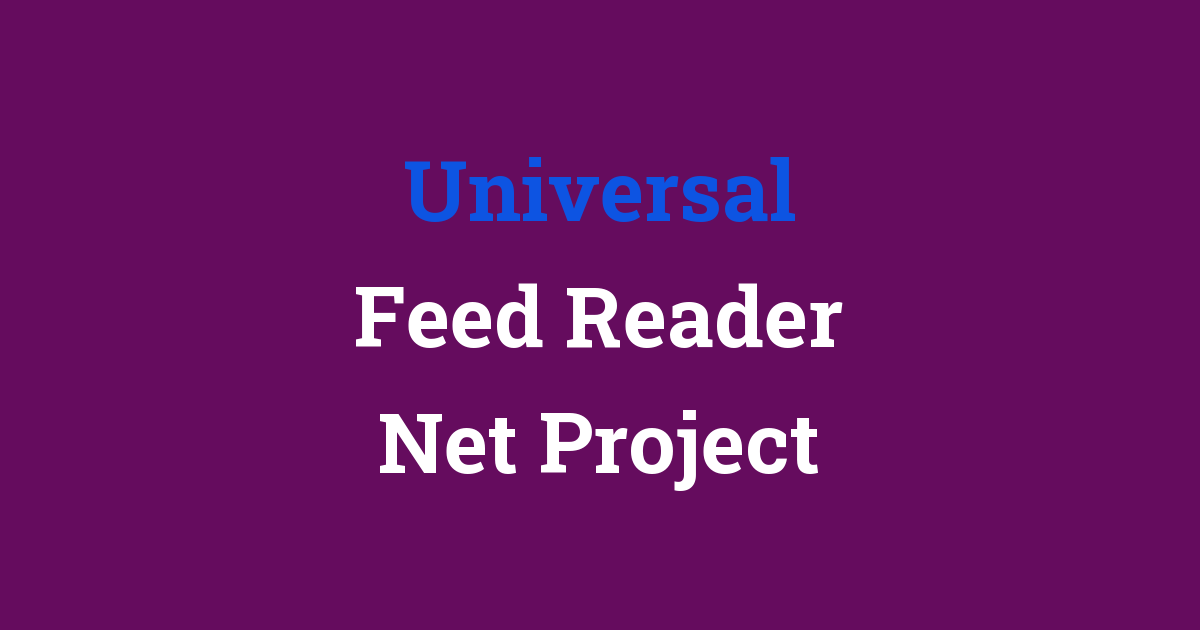Project for a universal feed reader on the net.
Universal Feed Reader Net Project
Introduction
In today’s fast-paced world, staying updated with the latest news and information is essential. With the rise of the internet and social media, there is a constant influx of new content being generated every second. To keep up with this ever-growing volume of information, feed readers have become indispensable tools. Feed readers aggregate content from various sources and present it in a unified format for easy consumption. This project aims to develop a universal feed reader that can cater to the diverse needs of users across different platforms.
Problem Statement
The existing feed readers available in the market are often limited in their functionality and compatibility with different sources. Users have to resort to using multiple feed readers to access content from various sources, leading to a fragmented user experience. Moreover, the lack of customization options and the inability to seamlessly sync data across devices are major pain points for users. There is a need for a universal feed reader that addresses these challenges and provides a comprehensive solution for managing feeds.
Existing System
The current feed reader systems in the market are designed to cater to specific platforms or sources. For example, some feed readers are optimized for RSS feeds, while others are tailored for social media platforms. This siloed approach restricts users from accessing content from a wide range of sources through a single interface. Furthermore, the lack of cross-platform compatibility limits the usability of existing feed readers, as users have to switch between different applications to access their feeds.
Disadvantages
1. Limited functionality: Existing feed readers lack advanced features such as content filtering, tagging, and custom layouts, making it challenging for users to manage their feeds effectively.
2. Fragmented user experience: Users have to use multiple feed readers to access content from different sources, leading to a disjointed user experience.
3. Lack of customization: Users have limited options to customize the interface and settings of existing feed readers according to their preferences.
4. Synchronization issues: Data synchronization across devices is often cumbersome and unreliable, resulting in inconsistencies in feed updates.
Proposed System
The proposed universal feed reader aims to address the shortcomings of the existing systems by providing a comprehensive solution for managing feeds from various sources. The key features of the universal feed reader include:
1. Compatibility with multiple sources: The universal feed reader will support a wide range of feed formats, including RSS, Atom, and social media feeds, to enable users to access content from diverse sources through a single platform.
2. Customization options: Users will be able to personalize their feed reader interface by customizing layouts, themes, and settings according to their preferences.
3. Advanced filtering and tagging: The universal feed reader will incorporate advanced filtering and tagging options to help users organize and categorize their feeds efficiently.
4. Cross-platform synchronization: Data synchronization across devices will be seamless, allowing users to access their feeds from anywhere, at any time.
Advantages
1. Comprehensive feed management: The universal feed reader provides a centralized platform for users to access and manage feeds from various sources, enhancing user convenience and efficiency.
2. Enhanced customization: Users can tailor the interface and settings of the feed reader to suit their individual preferences, improving the overall user experience.
3. Improved organization: Advanced filtering and tagging features help users organize and categorize their feeds effectively, enabling better content discovery and consumption.
4. Seamless synchronization: Cross-platform synchronization ensures that users can access their feeds consistently across all their devices, promoting a seamless user experience.
Features
1. Support for multiple feed formats: The universal feed reader will be compatible with RSS, Atom, and social media feeds to cater to a wide range of sources.
2. Customizable interface: Users can customize the layout, themes, and settings of the feed reader to tailor it to their preferences.
3. Advanced filtering and tagging: Users can filter and tag their feeds to organize them according to topics, keywords, or sources.
4. Cross-platform synchronization: Feeds will sync across devices in real-time, ensuring users have access to the latest content on all their devices.
Conclusion
In conclusion, the development of a universal feed reader is crucial to meet the evolving needs of users in the digital age. By addressing the limitations of the existing systems and introducing new features, the universal feed reader aims to provide a comprehensive solution for managing feeds from various sources. With enhanced customization options, advanced filtering capabilities, and seamless synchronization, the universal feed reader promises to revolutionize the way users consume content online. This project represents a significant step towards creating a more user-friendly and efficient feed reader that can cater to the diverse needs of users across different platforms.

